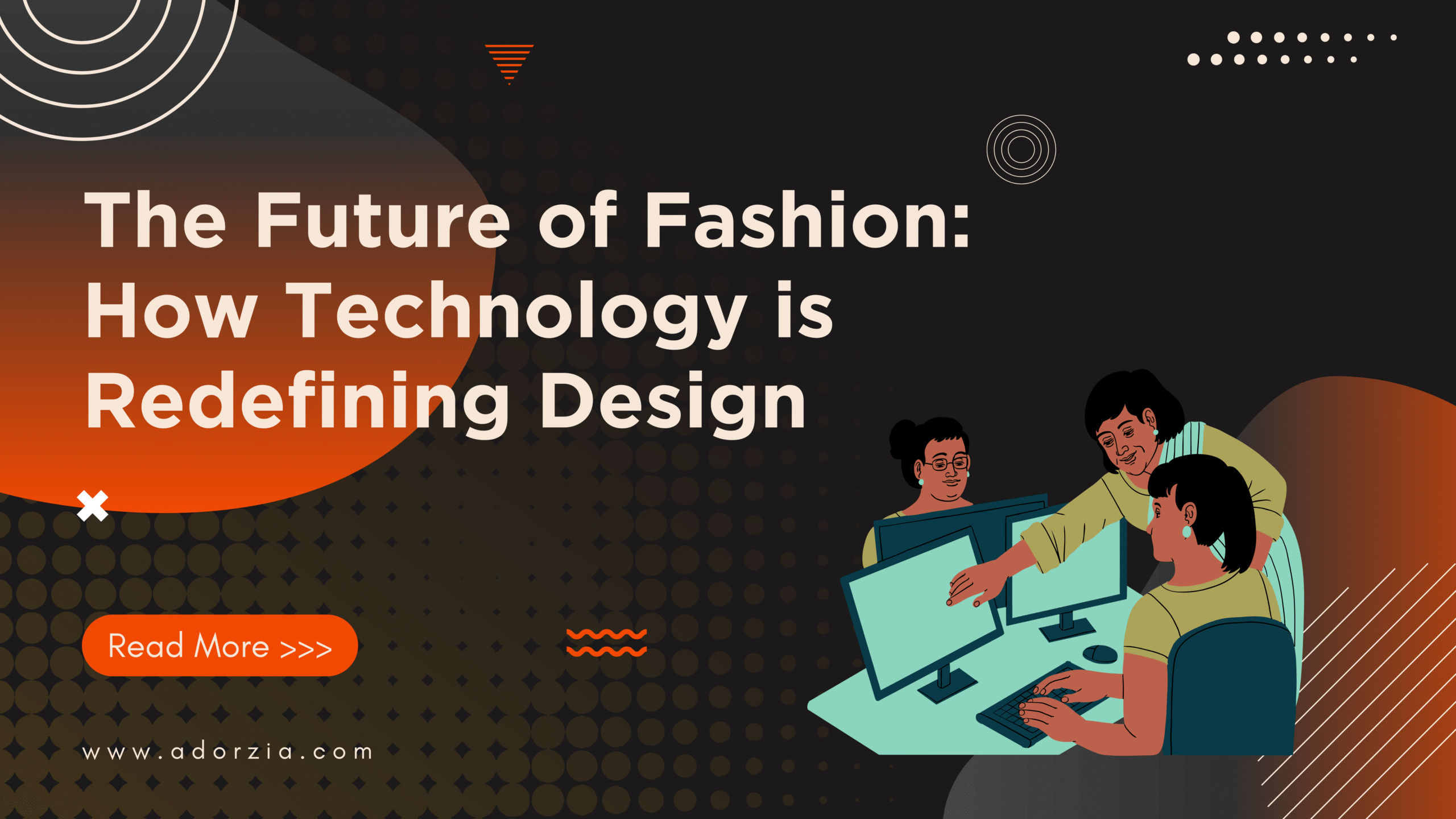The Future of Fashion: How Technology is Redefining Design

Introduction
Fashion has always been an industry defined by creativity and reinvention. But today, it isn’t just about fabric and thread—it’s about algorithms, immersive experiences, and new digital frontiers. Technology is reshaping every stage of the fashion journey, from the first sketch to the final purchase.
In this article, we’ll explore how AI tools, virtual fitting rooms, and digital fashion trends are driving the next wave of innovation—and what it means for designers, brands, and consumers alike.
1️⃣ AI-Powered Design: Creativity Meets Machine Intelligence
Artificial intelligence is no longer a futuristic concept reserved for science fiction. It’s already transforming how fashion collections are conceived and executed.
🌿 How AI Assists Designers
- Predictive Analytics: AI tools analyze past trends, social media conversations, and sales data to forecast what consumers will want next season.
- Generative Design: Platforms like CLO 3D and Adobe Firefly enable designers to feed mood boards or keywords into AI engines that generate concept variations in seconds.
- Pattern Making & Grading: Algorithms now automate complex technical tasks, such as creating size variations and optimizing fabric usage.
🎨 Why It Matters
Instead of replacing creativity, AI is supercharging it. Designers can spend less time on repetitive work and more time refining their artistic vision. Small studios that once struggled to compete now have access to tools that were once only affordable for big brands.
2️⃣ Virtual Fitting Rooms: Bridging the Physical and Digital
If you’ve ever hesitated to buy clothes online because you couldn’t be sure they’d fit, you’re not alone. Sizing uncertainty is one of the biggest challenges in e-commerce. Enter virtual fitting rooms—an innovation that blends augmented reality (AR) and 3D body scanning.
👗 How Virtual Fitting Works
- Body Scanning: Apps use your phone camera or sensors to create a 3D model of your body.
- Virtual Try-On: You can see garments draped over your avatar in real time, moving naturally as you turn or walk.
- Fit Prediction: AI recommends the ideal size based on your shape and past purchases.
🌟 Examples in Action
- Zara has introduced AR displays where shoppers point their phones at a display and see models wearing the clothes.
- ASOS offers a virtual catwalk experience to preview fit and movement.
💡 Why It Matters
Virtual fitting reduces returns, increases confidence in online shopping, and makes the buying experience more interactive and fun. For designers, it also means the possibility of reaching global audiences without the constraints of physical retail.
3️⃣ Digital-Only Fashion: The Rise of Virtual Collections
Imagine paying for a dress you’ll never actually wear—at least, not in the real world. It may sound strange, but digital-only fashion is exploding in popularity.
🪐 What Is Digital Fashion?
These are garments that exist purely as 3D assets:
- You purchase them to wear in photos, social media content, or virtual worlds.
- No physical production, no shipping, and zero waste.
✨ Who’s Doing It?
- The Fabricant is a pioneer in creating couture-level digital clothing.
- DressX sells virtual outfits for influencers and gamers.
- Major brands like Gucci and Balenciaga have launched digital capsules in the metaverse.
🌿 Sustainability Impact
Digital fashion significantly reduces:
- Water consumption.
- Carbon footprint.
- Textile waste.
In a world increasingly conscious of climate change, this is more than a trend—it’s a revolution in how we define style and ownership.
4️⃣ 3D Printing and On-Demand Production
3D printing isn’t just for prototypes anymore. From shoes to jewelry to entire garments, designers are using additive manufacturing to create bespoke, made-to-order pieces.
⚙️ Benefits of 3D Printing
- Customization: Each product can be tailored to an individual’s measurements and preferences.
- Speed: Rapid prototyping shortens development cycles.
- Sustainability: On-demand production reduces inventory waste.
👠 Real-World Examples
- Adidas uses 3D-printed midsoles in its Futurecraft line.
- Independent designers are experimenting with printed textiles and accessories that push the limits of form.
5️⃣ Data-Driven Personalization
Consumers today expect more than one-size-fits-all. They want personalized recommendations, styling advice, and shopping experiences.
🔍 How Data Drives Personalization
- Behavior Tracking: AI analyzes browsing habits, purchases, and preferences.
- Recommendation Engines: Algorithms suggest products likely to appeal to each individual.
- Personal Stylist Bots: Virtual assistants help customers build looks based on their taste and body type.
Personalization builds loyalty and helps brands stand out in a crowded marketplace.
6️⃣ The Metaverse: Fashion’s New Playground
As virtual worlds like Roblox and Decentraland gain popularity, fashion is finding fresh audiences and revenue streams.
🧭 Metaverse Fashion Highlights
- Virtual fashion shows and launches.
- NFT collectibles linked to physical products.
- In-game skins and exclusive drops.
For designers, this opens up entirely new business models and creative possibilities.
Conclusion: Embracing the Future
The intersection of fashion and technology is no longer optional—it’s essential. Whether you’re an independent designer or a global brand, embracing tools like AI design platforms, virtual fitting rooms, and digital fashion assets is key to staying relevant.
At Adorzia, we believe these innovations are not just reshaping the industry—they’re democratizing it, making it more inclusive, sustainable, and accessible.
The future of fashion is here. Are you ready to be part of it?
✨ Ready to Explore More?
Stay connected with Adorzia for insights, resources, and tools that empower designers to lead in this new era.

